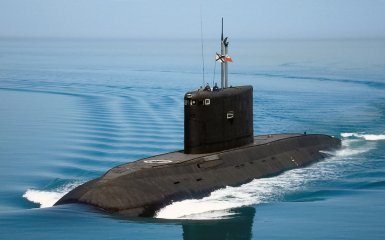The Ministry of Defense of Great Britain analyzed in detail the possible consequences of the Ukrainian attack on the Russian submarine "Rostov-on-Don", as a result of which the submarine was successfully sunk.
Points of attention
- A strike by Ukrainian forces on a submarine may force the Russian Federation to reconsider its plans for naval deployment in Crimea.
- While this boosted Ukraine's morale, the impact on Russia's ability to strike from the Black Sea is not significant.
- For the authorities of the Russian Federation, it is economically more profitable to build a new submarine than to try to save Rostov-on-Don.
"Rostov-on-Don" went to the bottom. What does this mean for the Russian Navy
Interestingly, British intelligence officers called the strike by Ukrainian forces on a Russian submarine "the last chapter in the history of the submarine."
Although the attack occurred in conjunction with a series of drone strikes, it is possible that US ATACMS long-range missiles were used to destroy the enemy target.
Also, British intelligence suggests that the Russian submarine was most likely not fully repaired after the previous attack on Crimea in September 2023.
In addition, experts emphasize that it will be economically more profitable for the Russian authorities to build a new submarine than to try to save Rostov-on-Don.
Can it affect the course of the war?
Although this is a significant morale boost for Ukrainian forces, it is unlikely to have a significant impact on Russia's ability to launch long-range strikes on Ukraine from the Black Sea, the British Ministry of Defense notes.
However, foreign intelligence also emphasizes that this strike highlights the growing risks for Russian forces in Crimea.
In addition, it is quite possible that it will force the aggressor country of the Russian Federation to reconsider any plans to redeploy any significant naval forces to the peninsula.
As mentioned earlier, on August 3, Ukrainian forces struck in occupied Crimea, hitting a submarine and a S-400 anti-aircraft missile system.
Rostov-on-Don was a carrier of Kalibr missiles and recently came out of emergency repairs.
The cost of this submarine is estimated at 300 million dollars.




